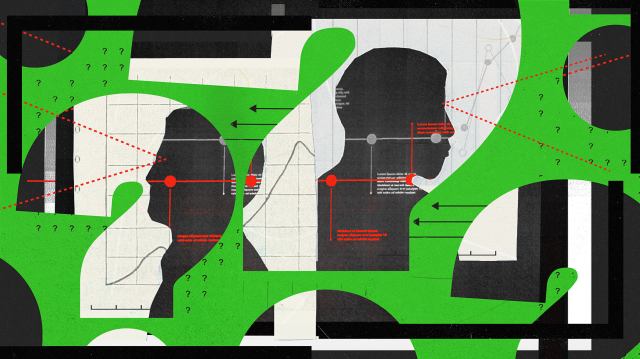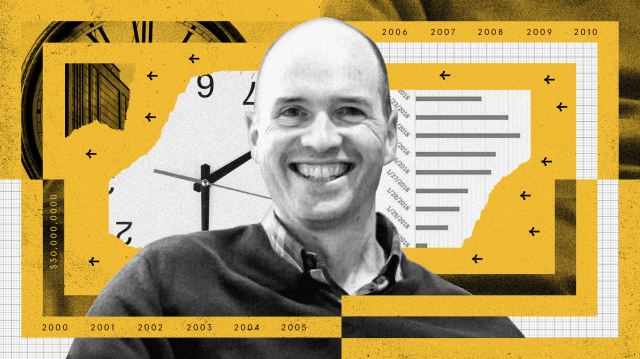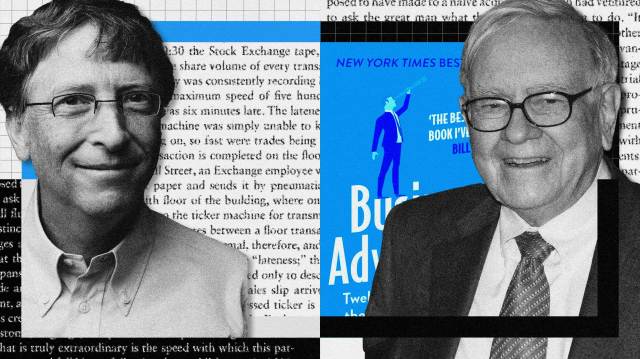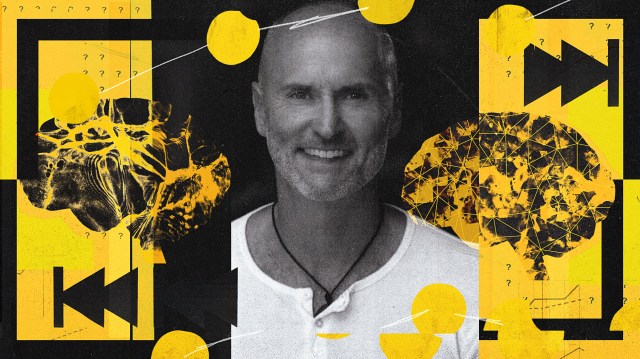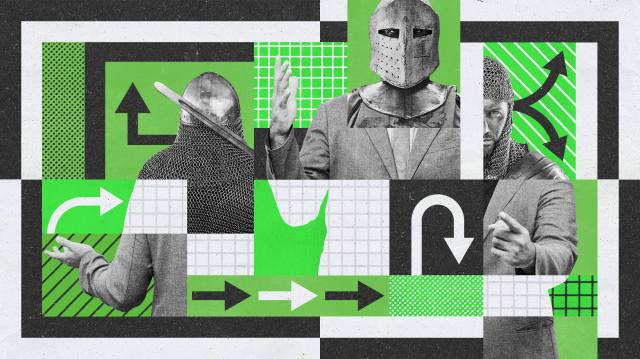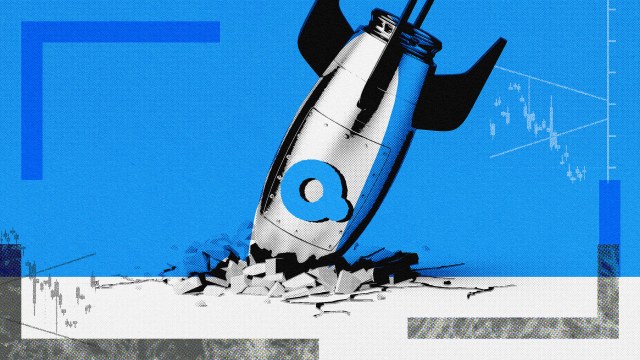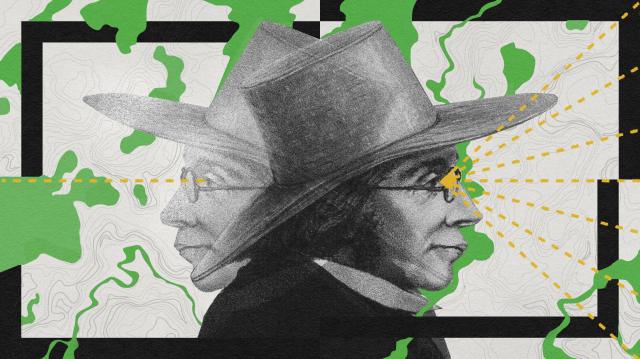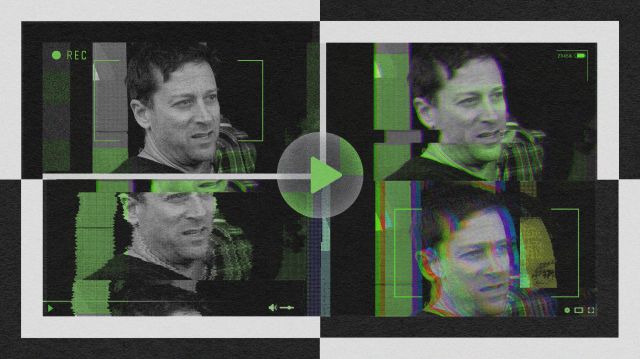5 ways leaders can solve the “hindsight dilemma”

- Organizational learning is an incredibly valuable asset and incorporates the power of hindsight.
- Biases and revolutionary thinking can make it difficult to learn from past experiences: hence, the “hindsight dilemma.”
- Startup leaders can manage the hindsight dilemma in a variety of ways.
“Learning is the greatest asset a team has.” That’s Bobak Tavangar, the co-founder and CEO of Brilliant Labs, a tech company that makes open-source, AI-powered eyewear. And he’s right. Organizational learning is critical to innovative thinking, employee engagement, healthy risk-taking, and top-level leadership.
While learning can be approached in a variety of ways, one is to tap into the power of hindsight. We acquire experiences and information, and then upon reflection we extract lessons to power change. For instance, team members can draw upon their experiences at previous jobs to solve new problems. Meanwhile, leaders can learn from the business ventures that inspired them.
This makes hindsight a powerful mental tool for startup leaders building their businesses and cultures. Yet, it’s not without its risks.
A gaggle of biases can creep into our assessment of the past, leading us to false understandings of reality. Additionally, startups are often the market’s trailblazers, hoping to bring revolutionary products, services, and ideas to life. The lessons of yesteryear, whether personal or organizational, may not prove practical while navigating that frontier.
Let’s call this the “hindsight dilemma”: the need to derive lessons from the past while simultaneously avoiding the pitfalls of looking back.

To help with this dilemma, we spoke with Tavangar and three other startup founders: Lionel Mora, co-founder of Neoplants, a bioengineering company that makes air-purifying houseplants; Nemailla Bonturi, co-founder of ÄIO, a bioengineering company that makes edible oils from inedible biomass; and Jake Hoffner, co-founder of Qualified, an assessment platform specializing in software engineering.
Here are the lessons they’ve learned about, and through, hindsight:
#1 Build on successes
When running a startup, you’re often working toward big goals that can be a long way out. Tavangar and his team spent years designing their AI-powered eyewear, Frame, for launch. Similarly, Neoplant’s air-purifying plants and ÄIO’s sustainable oils weren’t the result of a weekend bio-hackathon. It took a lot of research and development to get them right.
Looking so far ahead can make it difficult to maintain momentum and enthusiasm. Hoffner’s strategy to keep forging ahead is to remember your past successes — no matter how small.
“Each success builds a layer of trust in yourself and your team that you can overcome obstacles, no matter how difficult the situation seems at the time,” Hoffner says.
For instance, when developing Qualified, Hoffner and his team often tapped into their experiences building Codewars, their first skill-based platform. Although Qualified proved a massive undertaking, that previous experience showed them it was possible. It also afforded them the knowledge necessary to re-imagine past solutions to fit the predicaments they faced.
“Past success can be a predictor of future success,” Hoffner says. “Find ways of establishing small wins that allow you to build momentum.”
#2 Learn from mistakes
But as any startup founder will attest, it won’t always be success after glorious success. A great many mistakes will find their way into the history books, too. Given this reality, a leader’s aim should be to avoid the mistakes you can while handling the ones you can’t intelligently.
“You have to go through the chaos, the mistakes, and the many crisis moments over and over again to accumulate the experience and the scar tissue that will help you become a greater founder,” Mora says. “This is how you can eventually make quicker, better decisions; have the right ideas at the right time; and lead your team through the good and tough moments.”
“The gift of hindsight is learning gained only after making some painful mistakes.”
Bobak Tavangar, co-founder and CEO of Brilliant Labs
To better manage mistakes, Bonturi has borrowed a habit from her scientific background. She views endeavors as operating in a cycle of “design-build-test-(fail?)-learn.” If something fails, then that mistake becomes data she can learn from and incorporate into her next endeavor. But notice that even successes end in learning — becoming equally valuable data for future decision-making.
“The gift of hindsight is learning gained only after making some painful mistakes,” Tavangar notes. “But that is the inevitable price of doing something worth doing.”
#3 Separate insights from circumstances
As mentioned, when we try to learn from either our successes or mistakes, we can sometimes infer the wrong lessons. One in particular can be particularly pernicious. That is: We believe that because a solution worked once, it’s guaranteed to work in the future. The opposite is equally mistaken: We believe a misstep renders the formative decision or thought process worthless.
But as Hoffner points out, yesterday’s success may not work the same way because circumstances are always changing. Similarly, a solution that didn’t work under one circumstance could be modified to meet another.
As such, leaders need to be able to separate circumstances from insights when looking for lessons from the past. “Where is the wisdom that holds true regardless of the circumstances?” Hoffner asks.
Hoffner’s process is to look at the numerous variables that must go into every decision. He then tries to suss out those that are unique to that situation. That way, he can consider the factors surrounding those variables to ensure he isn’t overlooking, and therefore undervaluing, what is unique about the circumstance.
“It’s best to not overly abstract past experiences and apply them to current ones,” Hoffner warns. “You must look at what is unique about the situation you are facing versus what is similar.”
#4 Take the time to reflect
For startup leaders, it often feels like there’s always an important decision to make — and it was probably due yesterday. Under such an ever-present time crunch, it can be tempting to give hindsight short shrift. You might hope that the lesson of the day will be self-evident or naturally incorporate itself into your decision-making.
If only it were that easy. In truth, the best way to glean useful knowledge from the past is to take the time to reflect upon it.
This reflection can take many different forms. You may take up journaling, note-taking, or some other form of written self-evaluation. Others may prefer to reflect quietly in their office on the week’s happenings and dictate what they find.
It’s easy for hindsight to slip into resentment and regret. The result is that rather than helping you move on to confront the challenges ahead, hindsight paralyzes you.
You can also create opportunities for team members to provide feedback, such as surveys, or seek constructive criticism during meetings. At Neoplants, Mora and his team document milestones, roadblocks, and setbacks in either a document or Slack message. This is then shared with everyone for group reflection and, if warranted, celebration.
And then he and his team move on. “In my view, looking backward too much — especially at mistakes or imperfect decisions — can lead to a lot of mental fatigue and unnecessary negativity which can also spread to the team. It’s important to learn from the past, but it’s dangerous to get stuck there,” Mora says.
Tavangar agrees, warning that it’s easy for hindsight to slip into resentment and regret. The result is that rather than helping you move on to confront the challenges ahead, hindsight paralyzes you.
#5 Balance ego with a collective understanding
Managing the hindsight dilemma can be daunting, but a huge advantage leaders have is that they don’t have to do it alone. They have gathered around them a network of talented, thoughtful, intelligent people, and they can tap into the learning of those people to help hone their decision-making.
“A prerequisite to all of this is the ability to reflect with humility and detachment from self — one of the hardest things to do because the ego hates it!” Tavangar says. “Leaders who cannot do this will struggle to grow quickly enough with the demands of the company.”
“Hindsight, in my opinion, is crucial for the continuous growth and development of a startup.”
Nemailla Bonturi, co-founder of ÄIO
Tavangar thanks his cofounders for being willing to challenge his thinking while also complementing his strengths. Mora points to relationships he has with other business founders who can help him anticipate challenges and put them in perspective. Bonturi cites data and analytics as a helpful way to reduce self-serving biases in decision-making.
That said, taking ego out of the equation isn’t the same as forfeiting your insights and understanding for popular opinion. As Hoffner adds, ask ten people for advice, and you’ll get ten different answers that will conflict at some level. In such moments, it’s wise to remember that “you know your business and what [advice] should be applied and what should not.”
As always when it comes to leadership, it’s about walking a fine line.
A look back at hindsight
How will you know if you’ve used hindsight correctly? When it helps you avoid the many pitfalls of biased learning, overconfidence, resistance to change, and unnecessary risk.
“Hindsight, in my opinion, is crucial for the continuous growth and development of a startup,” Bonturi says. “By learning from past experiences, entrepreneurs can make more informed decisions, avoid repeating mistakes, and build a stronger, more resilient business.”
Mora adds that it doesn’t come easy. You have to be clear on the fact that the journey will be long and hard. But with the advantage of hindsight, you will learn that you can travel that distance and much more.
“Typically, most of the challenges we face today would have paralyzed me a couple of years back. Today, I can deal with them,” he says.



